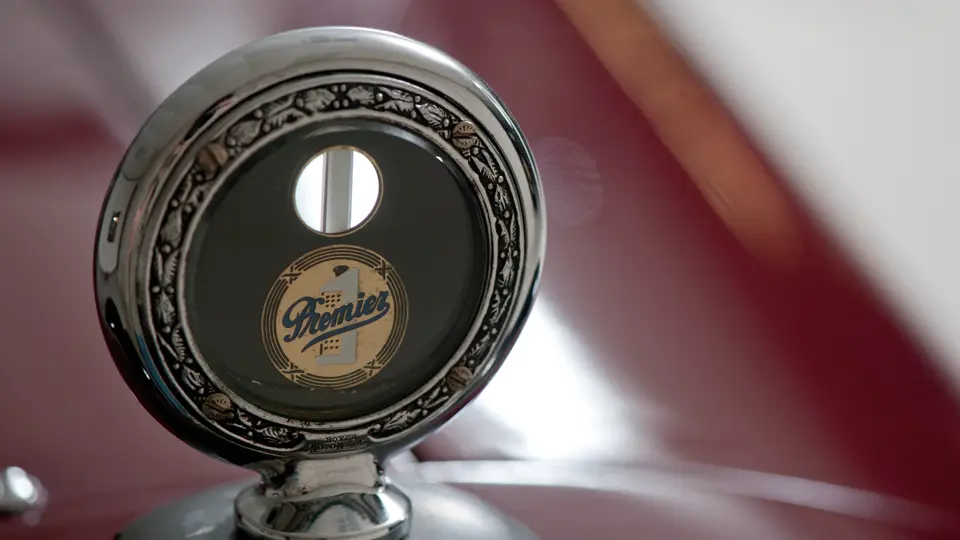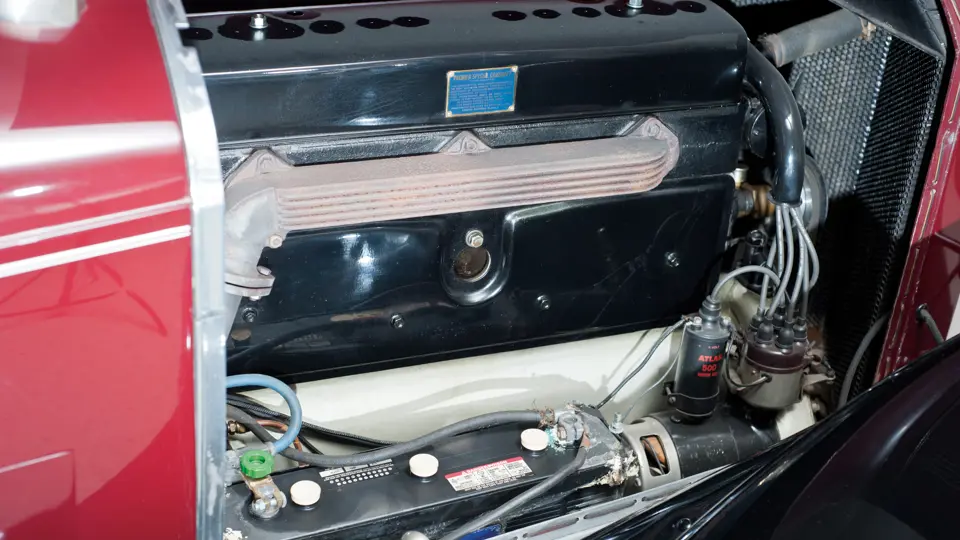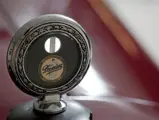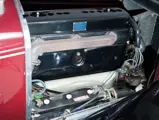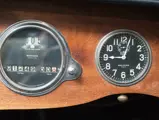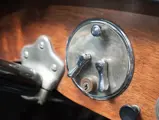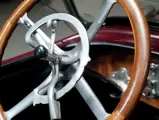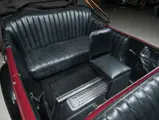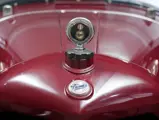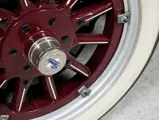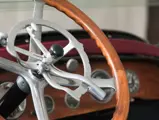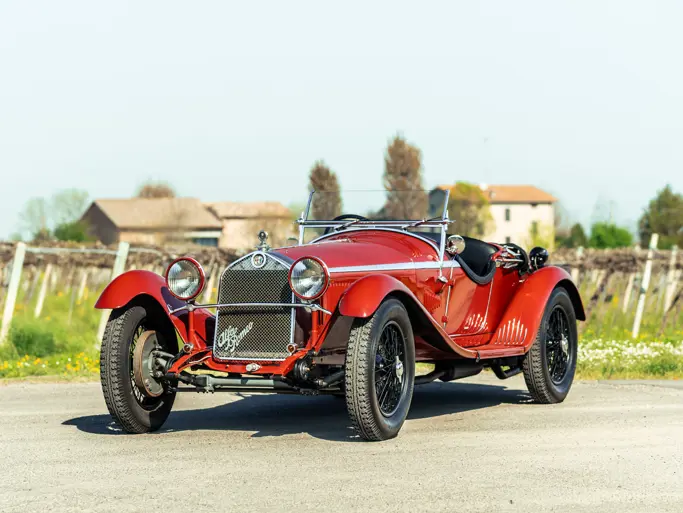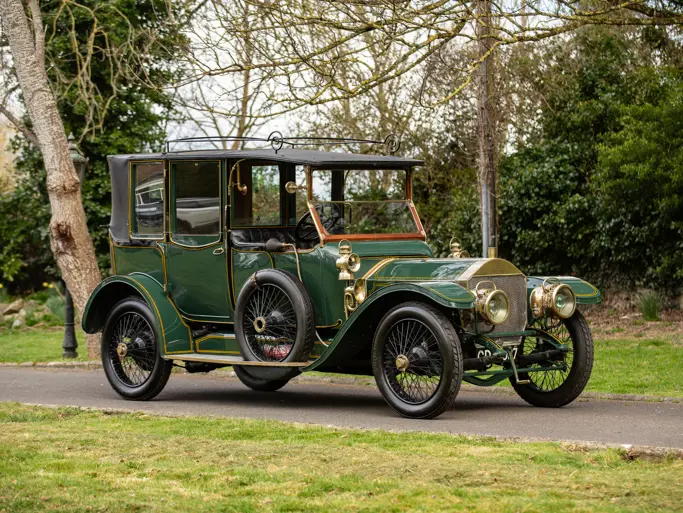65 bhp, 205.3 cu. in. overhead valve inline six-cylinder engine, three-speed manual transmission with Cutler-Hammer electric shift, solid front axle and live rear axle with semi-elliptic leaf springs, and two-wheel mechanical brakes. Wheelbase: 126.75 in.
• Offered from the estate of John O’Quinn
• Pioneering aluminum engine
• Novel Cutler-Hammer electro-magnetic shift
Premier was one of the early cars made in Indianapolis, Indiana, but it is the later models that are better remembered, because of modern innovations introduced in the teens. Actually, the Premier was quite advanced from the beginning, using overhead valves and a sliding gear transmission in 1903. In 1918, however, came the “aluminum six with magnetic gear shift.”
Aluminum engine blocks had been in use since 1916, but 1918 brought a transmission controlled by an electro-magnetic mechanism produced by Cutler-Hammer. Attached to the steering column was a pod containing pushbuttons, much in the manner of Packards nearly four decades later. The Premier did not shift automatically, but pushing the button for the desired gear was claimed to complete the shift, electrically, in one-fifth of a second. As an added convenience, it dispensed with the shift lever on the floor of the driving compartment.
The O’Quinn Collection purchased this 1920 Premier in the mid-2000s. Upholstered in black leather, it has jump seats in the rear compartment for a total of seven passengers. Dual spotlights are mounted on the windshield stanchions, and a MotoMeter graces the radiator cap. By the early-1920s, most automakers had abandoned vee radiators, so the Premier’s nose is a welcome throwback to that earlier streamlined era. Wide whitewalls provide a nice contrast to the black fenders and chassis. Ahead of its time, the new owner will certainly be the first on the block to offer rides in an “aluminum six with magnetic gear shift.”




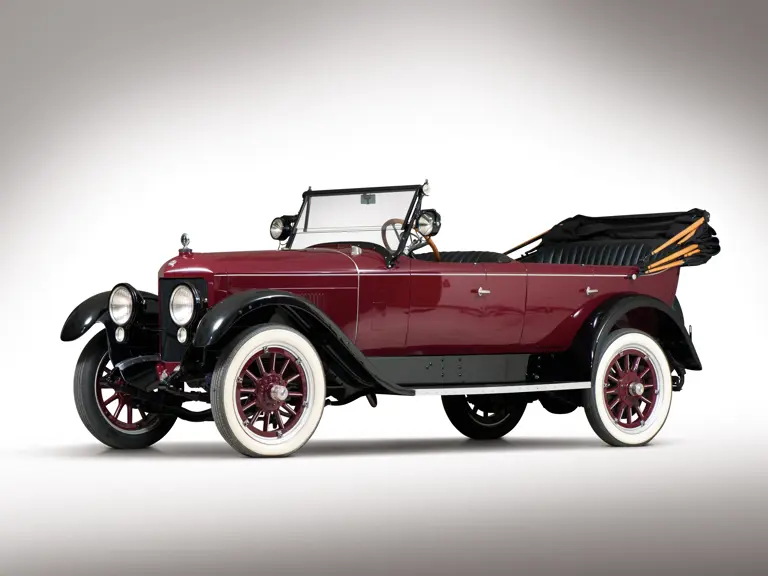
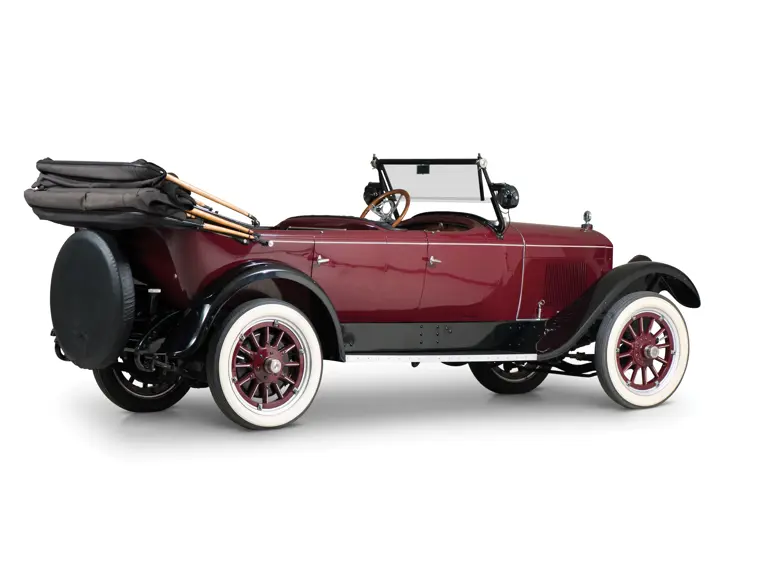
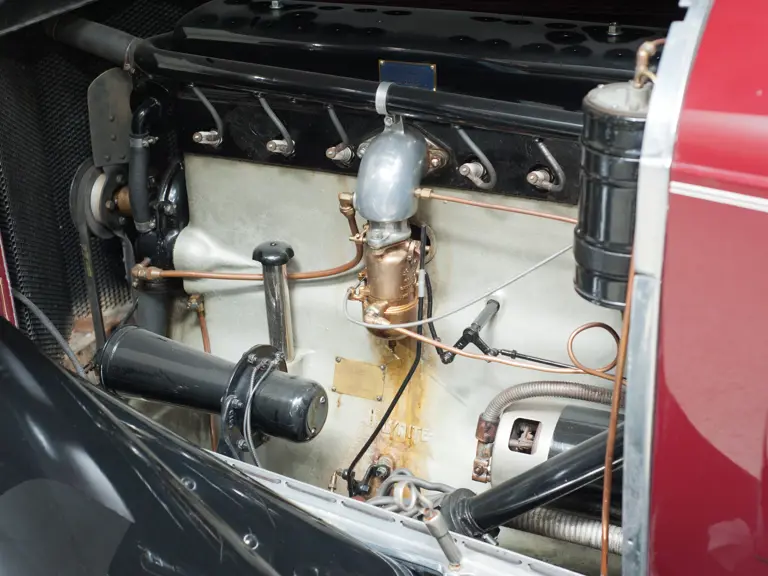
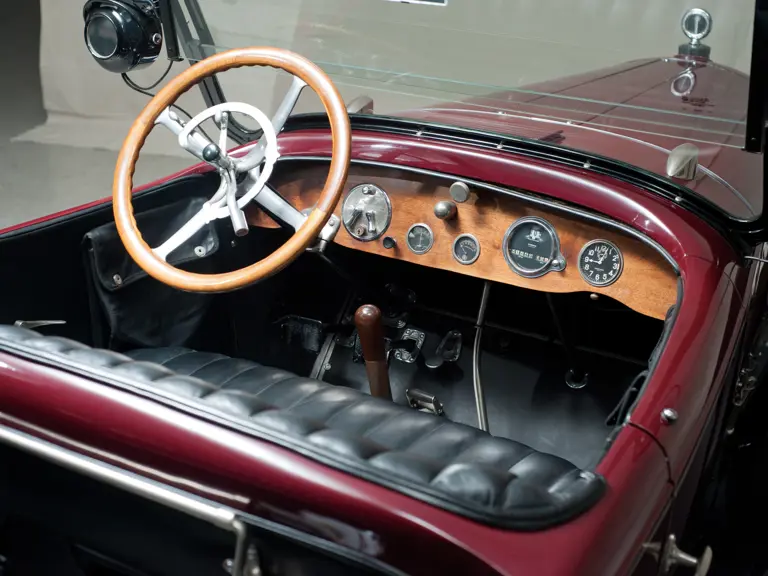
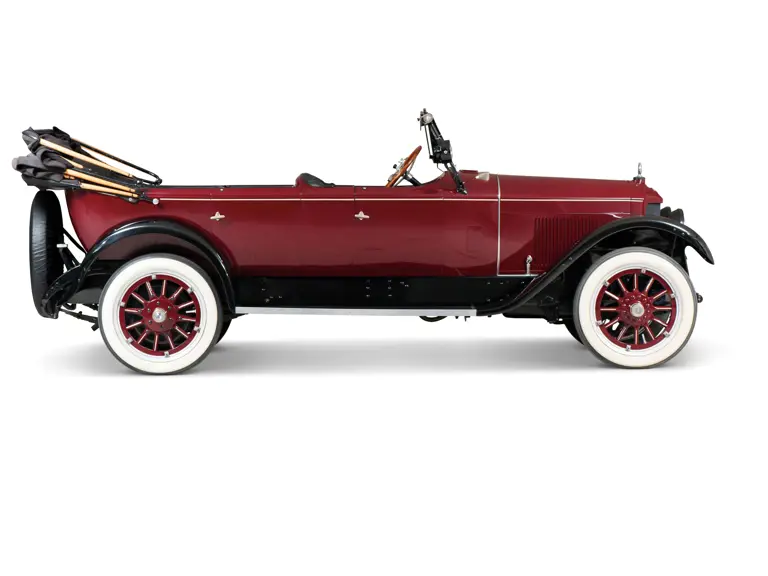
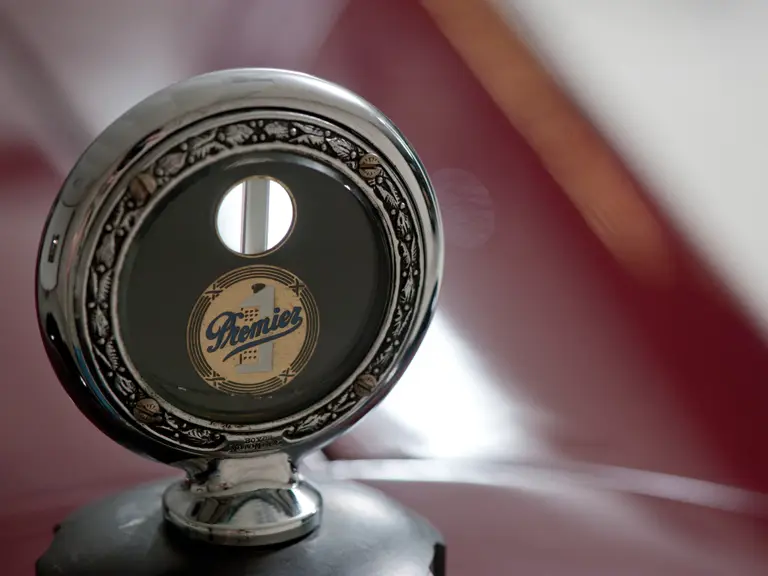

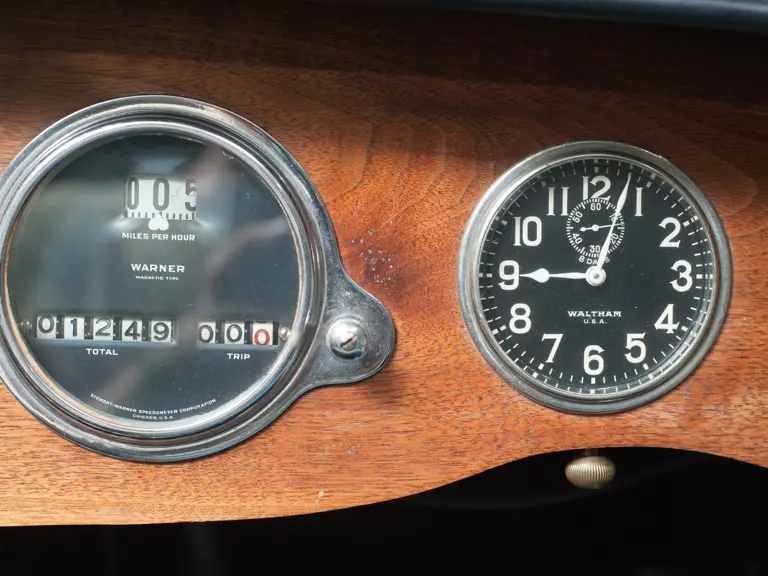
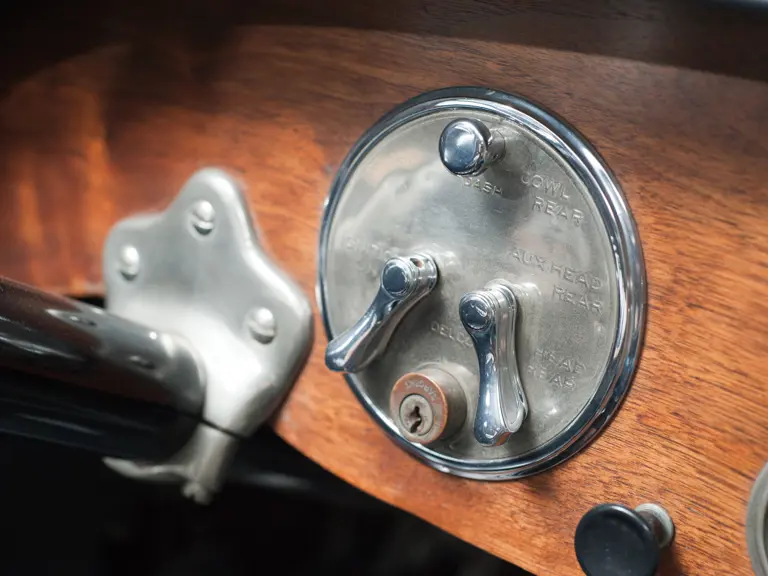
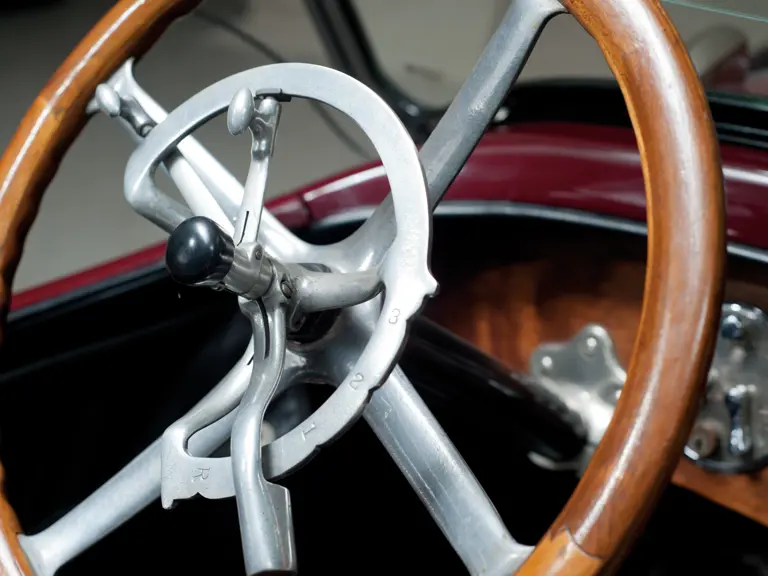
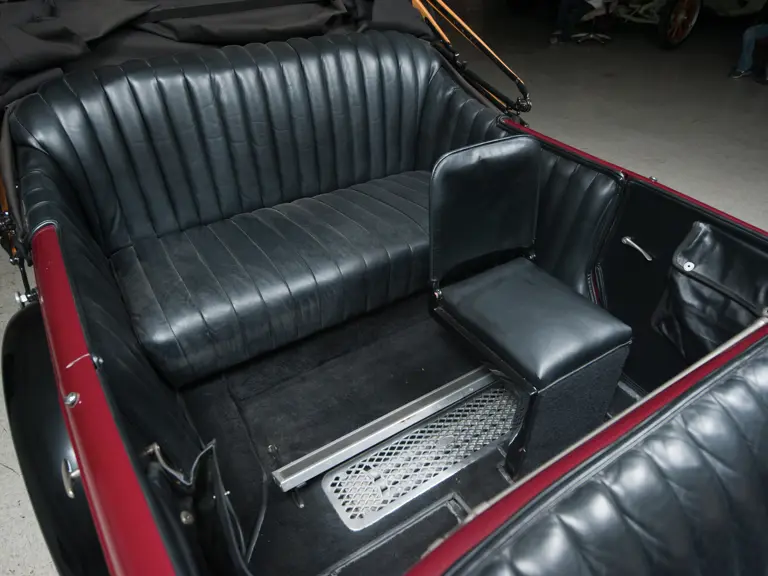

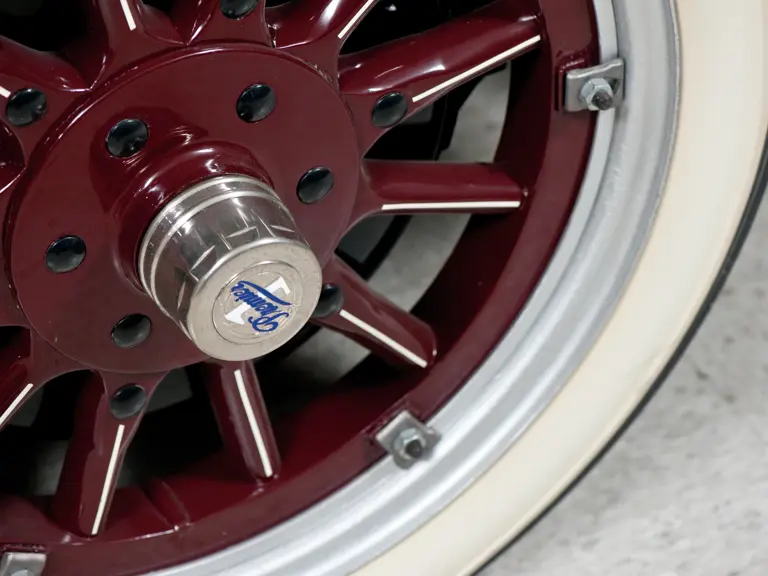
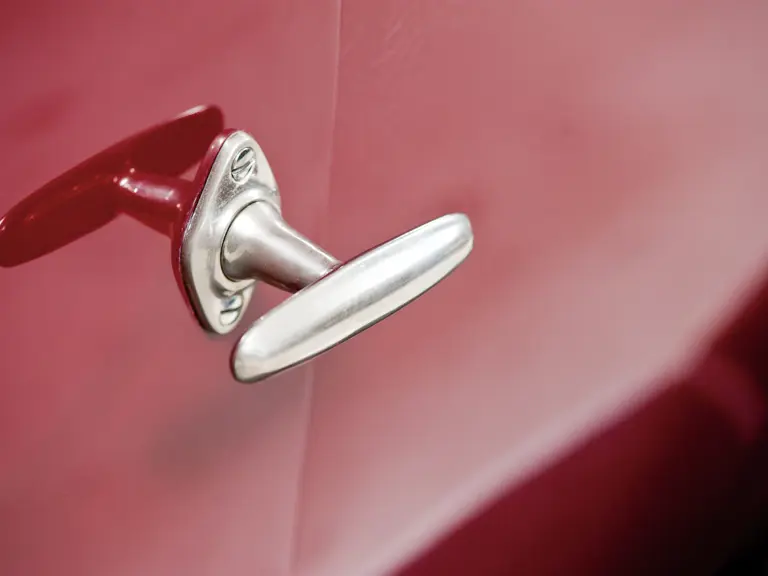
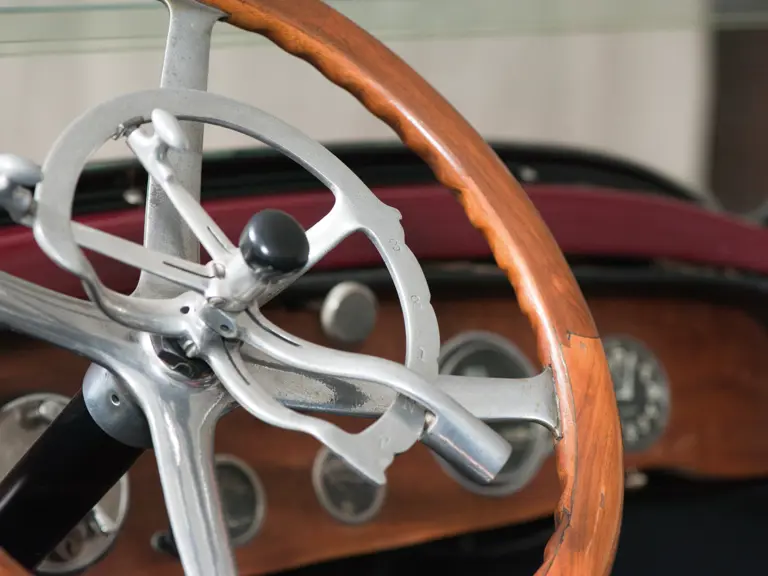

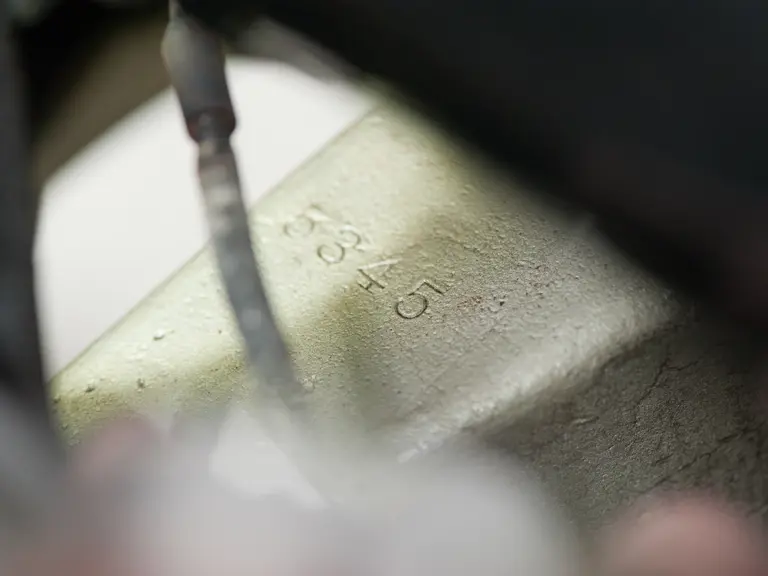
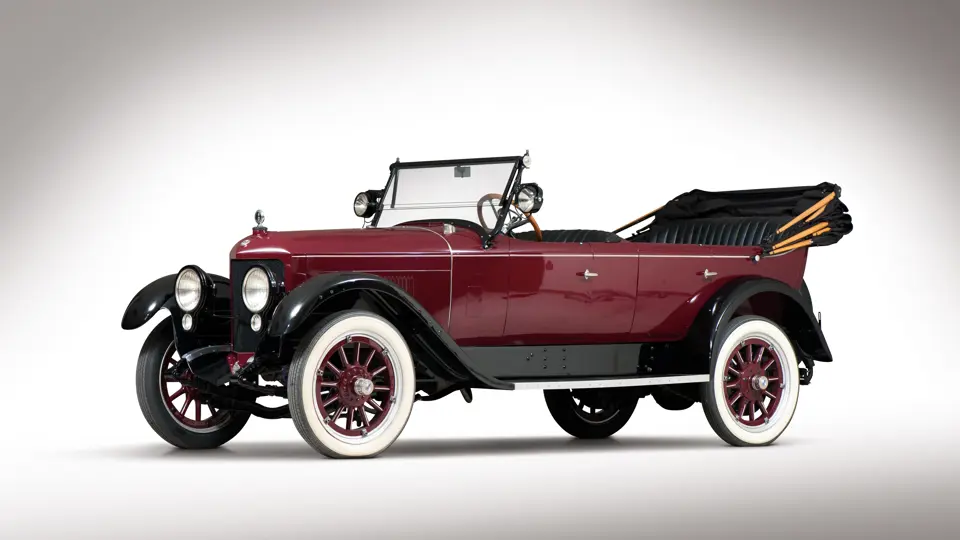
 | Hershey, Pennsylvania
| Hershey, Pennsylvania

